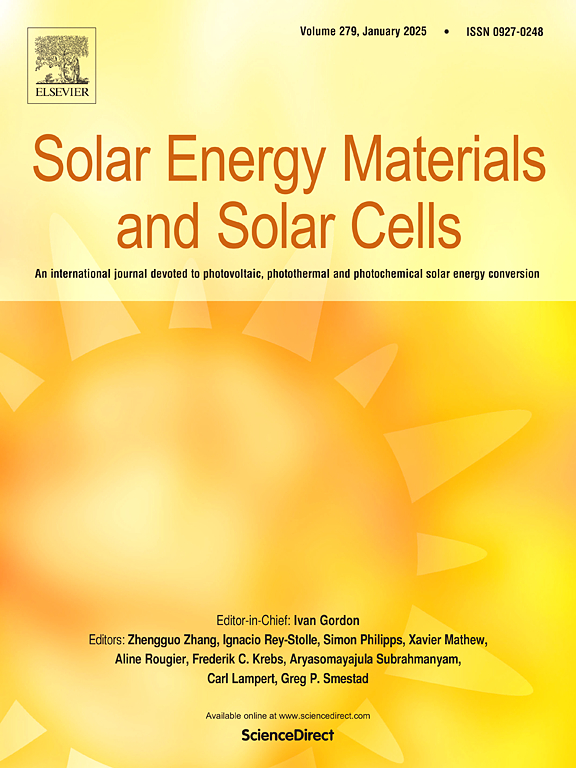Environmental influences on thermal performance of direct absorption solar collector filled with nanofluid
IF 6.3
2区 材料科学
Q2 ENERGY & FUELS
引用次数: 0
Abstract
Direct absorption flat solar collectors (DAFSC) have been drawn much attention to many residential heating purposes. It has been shown that thermal efficiency of these thermal devices will be enhanced if appropriate amount of nanoparticles volume concentration is exploited in collector. In the present study, first of all, a determination procedure for finding optimum amount of arbitrary chosen nanoparticles volume fraction utilized in DAFSC was presented by use of general chart of solar-weighted absorption coefficients against optical thickness of nanofluids in which the nanofluids extinction coefficients were predicted by independent Rayleigh scattering approximation model. This is an important step preventing either undesirable larger value of thermal losses from collector or reducing construction cost of nanofluid-based DAFSC due to smaller exploitation of nanoparticle volume concentration which can be considered as a part of novelty of current study. In the next step, an important designing parameter of collector namely overall heat transfer coefficient was predicted by utilization of thermal resistance network of DAFSC from which thermal losses of collector can be computed. Finally, among various environmental parameters affecting thermal performance of collector, it was found that by increasing wind speed from 0.125 to 16.2 m/s, energy and exergy efficiencies of DAFSC were severely reduced up to 30 % and 51 %, respectively. Furthermore, higher ambient air temperature and relative humidity can boost up thermal efficiency of collector up to 14 % while the role of ambient air temperature, solely, at constant value of other affecting parameters was quite minor.

求助全文
约1分钟内获得全文
求助全文
来源期刊

Solar Energy Materials and Solar Cells
工程技术-材料科学:综合
CiteScore
12.60
自引率
11.60%
发文量
513
审稿时长
47 days
期刊介绍:
Solar Energy Materials & Solar Cells is intended as a vehicle for the dissemination of research results on materials science and technology related to photovoltaic, photothermal and photoelectrochemical solar energy conversion. Materials science is taken in the broadest possible sense and encompasses physics, chemistry, optics, materials fabrication and analysis for all types of materials.
 求助内容:
求助内容: 应助结果提醒方式:
应助结果提醒方式:


